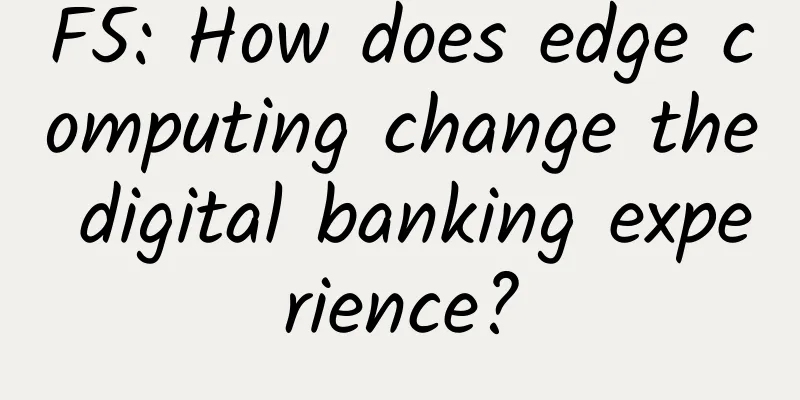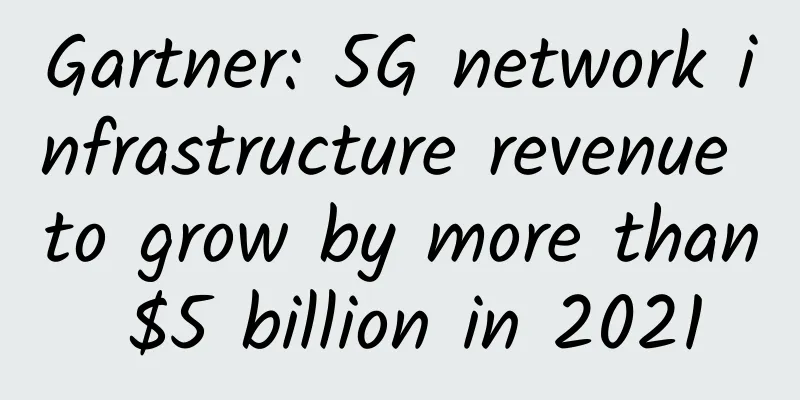F5: How does edge computing change the digital banking experience?

|
A report jointly released by IDC and Backbase pointed out that between 2020 and 2025, three-fifths of users in the Asia-Pacific region (about 63%) will gradually turn to digital banking services. By 2025, thanks to market liberalization and the issuance of new banking licenses, 100 new financial service institutions will emerge in the Asia-Pacific region. We believe that more banks will participate in this transformation in the future, but who will be the final winner? In the digital transformation of banks, emerging technologies such as edge computing play an important role. Technology will determine the speed and reliability of services, the security strength of mobile data, and whether service providers can provide a world-class digital application experience. Fast and reliable service Users expect digital banking (and other applications and devices) to provide a seamless, convenient, and caring user experience, and edge computing plays an important role in this, allowing users to complete registration and payment with a few taps, transfer funds in seconds, and log in using facial recognition. This is the hallmark of a digital-first bank. Edge computing is a name that defines its nature. Edge computing occurs at the "edge" of the network, close to the data source. Data does not have to be transmitted exclusively to the cloud for processing. Instead, the computation can take place at some intermediate storage and processing point on the network. Businesses can store and process users’ data close to where they are, which is why users experience fast service and can access digital banking services in just one second with the press of a thumb or the scan of their face. And, since personalization is a key feature of digital banking, service providers need the flexibility to share relevant, up-to-date content with users in real time, such as personalized information about their needs and spending patterns, in order to recommend specific products to them. Safety is success Distributed denial of service attacks (DDoS), data leaks, phishing attacks, and ransomware attacks are threats that digital banks will face. Therefore, security is the competitiveness of digital banks, which is crucial to their survival. That said, edge computing security is a tool for banks to protect their business and customer savings, with security solutions including web application firewalls, bot managers, and DDoS mitigation solutions. Additionally, because edge computing processes data closer to the source, it “travels” a shorter distance, reducing the bank’s exposure to threats such as data breaches. Strengthening and updating its security measures will be an ongoing process throughout a bank’s lifecycle, and only the most secure banks will win. Shifting from cost to economies of scale New digital banks must play the long game if they want to become industry leaders, which means offering more personalized services to meet customer needs while maintaining price competitiveness. Suppose the company's goal is to become an Internet company like WeChat and Alipay. In addition to electronic payment, the company also plans to enter the personal financial management tools and catering and entertainment markets, but all these value-added services will increase the amount of data to be stored and processed, thereby increasing costs. With edge computing, service providers can scale services based on cost. Service providers can flexibly decide which applications need to send data to the cloud and which can be kept at the edge. Through such a cost-effective strategy, digital banks can continuously optimize customer experience in terms of services. With the continuous emergence of digital banks, personalized services will become a watershed for the industry. Digital banks will use big data and data analysis to drive decisions at all levels from product design to customer service, so these technologies play an unprecedented role in determining whether the enterprise can succeed. Equally important is the technology they use to deploy services, because an excellent digital bank needs to provide fast and reliable services while ensuring security, and improve customer satisfaction with a world-class digital application experience, and preferably win loyal customers in the process, which is exactly what F5 is pursuing. |
>>: LTE vs. 5G: What’s the difference?
Recommend
Pre-5G era: scenarios where Wi-Fi is still indispensable
Recently, the concept of 5G technology has been h...
The role of 5G in education: enabling distance learning and virtual labs
In an era of rapid technological change, 5G is mo...
Aruba and China Telecom Global form strategic partnership to help Chinese companies expand overseas
Aruba, a subsidiary of Hewlett Packard Enterprise...
Dapr Practice in Alibaba Cloud Native
What is Service Mesh? Since 2010, SOA architectur...
OneTechCloud: 30% off all VPS monthly payments starting from 19 yuan/month, Hong Kong CN2&CMI/US CN2 GIA&9929/high defense optional
OneTechCloud has launched a Spring Festival promo...
FCC authorizes first batch of 6GHz WiFi devices
The FCC has reportedly authorized the first batch...
MQTT protocol, someone finally explained it clearly
[[409407]] This article is reprinted from the WeC...
Industry 4.0 is driving enterprise fiber access
Industry 4.0 has brought with it a wave of value-...
ColoCrossing: $12/year-1GB/20G SSD/1Gbps unlimited traffic/New York data center
ColoCrossing has released a new VPS promotional p...
HTTP/[0.9 | 1.0 | 1.1 | 2 | 3]
[[379542]] This article is reprinted from the WeC...
How 5G will improve hyper-connectivity in smart cities
[[343220]] 5G is the next big thing in the techno...
Huawei Cloud DevRun Summit: Login 2020 will be held tomorrow, and these friends are here
Xi'erqi subway station is so cool these days!...
Donghua's anti-unified prescription system helps hospitals develop an "indestructible body"
Recently, a piece of news that "Apple China ...
Looking back at the shadows that 2G brought to us in those years
[[247708]] Image source: Visual China There is no...
Don't blame the operator, your home Internet speed may be stolen by it
"What's your Wi-Fi password?" When ...









